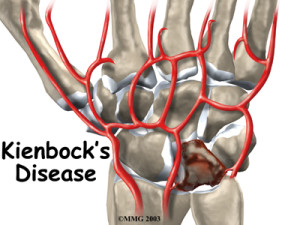Radial tunnel syndrome is rare, it is challenging to differentially diagnose and can be a monster to manage. If you have a recalcitrant case of tennis elbow then this post will interest you! This article discusses the best available evidence for assessment and management of radial tunnel syndrome.
Have you ever heard of snapping scapula syndrome? If you answered no, I would not be too surprised. Whilst this condition is more common than you may think, it seems to be underappreciated within the physiotherapy. Thus, this article will discuss snapping scapula syndrome including what it is, why it occurs and what you need to do to fix it!
Introduction The condition discussed in this article, you will come to find, is quite complex and can be a battle for the physiotherapist and physical therapist. Thoracic outlet syndrome is considered to be a collection of quite diverse syndromes rather than a single entity (Yanaka et al., 2004), and therefore, accurate diagnosis and enlightened treatment […]
Lateral epicondylalgia (tennis elbow) is a condition that I, and am sure many other physiotherapists out there, treat very commonly. Interestingly, despite the frequency with which healthcare is sought for this condition; only recently has our understanding of the pathophysiology of lateral elbow overuse injury improved. Consequently, the treatment approaches for lateral epicondylalgia vary widely and lack definitive evidence. Therefore, this article will discuss the evidence based assessment and management of lateral epicondylalgia (tennis elbow)…
Something A Little Different: So, I have decided to do something a little bit different. I have invested some time into creating some videos for YouTube based on various diagnoses and pathologies that have been previously discussed on this site. I have done this for a few reasons, including to allow the blog/site to reach a greater audience, to assist or cater for those who prefer to watch or listen to information rather than read lengthy articles and also to allow physiotherapists and physical therapists to refer patients/athletes to the videos as a source of information, which can be consumed in their own time….
Kienbock’s Disease is a rare and infrequently discussed source of wrist pain that you could definitely encounter in your clinical practice. The condition is named after the Viennese radiologist Robert Kienbock who presented his findings on the disorder in his 1910 publication ‘Concerning traumatic malacia of the lunate and its consequences’. This condition, discussed in depth below, primarily affects people between 15 and 40 years old and has been documented in athletes from many sports that include repetitive use of the wrist e.g. golf, tennis, martial arts, etc . Therefore, if you work with athletes from these sports, you should remain on high alert for the occurrence of Kienbock’s disease.
Introduction With a name like that, all physiotherapists will remember this one! But how much detail is remembered? Have a quick think about how many wrist patients you see, compared to knee or back patients. If you are in a private practice/outpatient clinic with a demographic anything like mine you will be seeing mostly backs, […]
Groin pain is a common complaint in sports involving running, kicking and explosive changes of direction, and as such is frequently encountered by the sports physiotherapist. In soccer, groin and lower abdominal pain accounts for 10-13% of injuries per year. However, due to the number of potential differential diagnoses for athletes with chronic pain in the groin and lower abdominal region only a small proportion of athletes are eventually diagnosed with athletic pubalgia (sports hernias). Athletic pubalgia is a poorly understood disease process and it is imperative that athletes with the condition are managed appropriately as the symptoms can eventually limit the athlete’s participation in training and playing.
In this episode of the podcast I interview Trent Salkavich. Trent is a Sports Podiatrist and Director of SportsPodiatrists.com.au. He consults from Sydney Sports Medicine Centre, Balmain Sports Medicine and Sydney Sports Med Specialists. He is currently the consulting podiatrist for the Australian Defence Force Academy Barracks, Sydney Apia (formally known as the Medibank) International Tennis Tournament, NSWIS/AIS Tennis players, various AUS/NSW Institute of Sport athletes, and the Australian Wallabies 2011 World cup team.
 TSP009: Footwear Prescription for Running with Trent Salkavich [ 33:18 ] Play Now | Play in Popup | Download
TSP009: Footwear Prescription for Running with Trent Salkavich [ 33:18 ] Play Now | Play in Popup | Download
Any physiotherapist working with academy footballers will know that these players are at risk of overuse injuries due to their immature musculoskeletal systems (1). However, it is imperative that therapists can confidently identify when the players require a therapeutic intervention rather than dismissing their symptoms as ‘growing pains’. It has been found that 5% of all injuries in football academies are due to overuse (1), as some young footballers will partake in high volumes of physical activity. This article will discuss the evidence based management of Osgood-Schlatters condition.
In the past this site has featured some lighter, colloquial blog posts. These articles discuss issues related to the greater physiotherapy community. Thus, I present a few mantras I have heard, adapted or made up for the physios to live by in the coming year.
Radial tunnel syndrome is rare, it is challenging to differentially diagnose and can be a monster to manage. If you have a recalcitrant case of tennis elbow then this post will interest you! This article discusses the best available evidence for assessment and management of radial tunnel syndrome.










